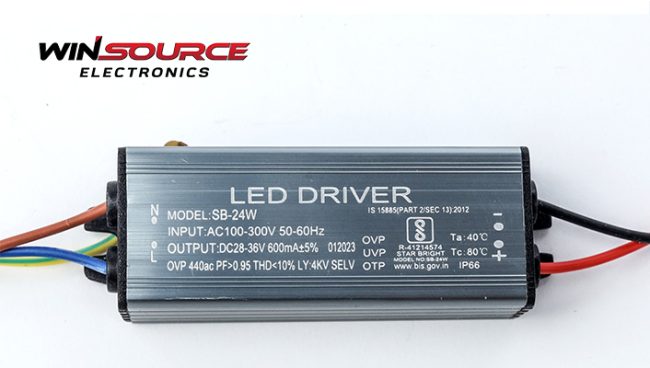
What is an LED Driver?
An LED driver helps regulate the flow of power to the LEDs, ensuring they shine brightly and consistently.
In PMICs, LED drivers are the organizers, managing power distribution and ensuring each LED gets the right amount of power. They keep everything in harmony, preventing chaos in the lighting performance.
Key parameters and characteristics of LED drivers
Imagine a car needing the right fuel to run efficiently. Similarly, LED drivers have key features like voltage regulation and current control to make sure LEDs get the power they need without wasting energy.
Types of LED Drivers
1. Serial LED Drivers
Serial LED drivers constitute a sequential arrangement akin to links in a chain, where each LED is intricately connected. This configuration is analogous to the sequential arrangement of fairy lights, with power passing from one LED to the next. Serial drivers are adept at delivering a consistent and sequential lighting effect, making them suitable for applications where such precision is paramount. However, their vulnerability lies in the potential impact of a single LED failure, which can disrupt the entire chain.
2. Parallel LED Drivers
Conversely, parallel LED drivers function like a synchronized dance troupe, with each LED drawing power directly from the source and operating independently. This structure resembles having individual switches for distinct lights within a room.
Parallel configurations excel in providing uniform lighting across different sections and exhibit resilience to the failure of a single LED, as it does not compromise the others. However, effective management of power distribution in parallel setups necessitates meticulous consideration.
3. Hybrid LED Drivers
Hybrid LED drivers seamlessly integrate elements from both serial and parallel architectures, presenting a versatile and adaptable lighting solution. Comparable to a harmonious blend of diverse musical instruments, hybrid configurations offer flexibility in design and application.
This approach accommodates scenarios where both sequential and simultaneous lighting effects are desired. While providing enhanced adaptability, the challenge lies in navigating the intricacies arising from the amalgamation of serial and parallel elements.
Achieving optimal performance in hybrid configurations demands a nuanced approach, yet their capacity to meet diverse lighting requirements positions them as a compelling frontier in LED driver technology.
LED Driver Optimization Techniques
Efficiency Improvement
Efficiency improvement is like upgrading a car for better gas mileage. In LED drivers, this means finding smarter ways to use power. It’s about making sure that the energy going in gets transformed into bright, useful light, without wasting any. Think of it as fine-tuning the engine to make it run smoothly and use fuel wisely, but in this case, the ‘fuel’ is electricity.
Thermal Management
Just like you wouldn’t want your computer to overheat, LED drivers need to stay cool for peak performance. Thermal management is all about ensuring that LEDs don’t get too hot and start misbehaving. It’s like having a cooling system for your electronics, making sure they work reliably and last longer.
Dimming and Control
Dimming and control are like having a dimmer switch for your lights. It’s not just about turning them on or off but adjusting the brightness according to your needs. This technique is about giving users more control over their lighting, making it adaptable to different situations. It’s the same as having a volume control for your lights, creating the perfect ambiance.
Power Factor Correction (PFC)
Power Factor Correction (PFC) is like teaching LED drivers good manners in an electrical system. It’s about making sure they play nice with other devices and use power efficiently. Think of it as making sure your appliances are polite guests in your home – not causing disturbances or wasting resources. PFC ensures that LED drivers work harmoniously in the electrical environment, reducing energy wastage.
These optimization techniques are like fine-tuning a musical instrument to produce the best sound. Each one contributes to making LED drivers more efficient, reliable, and adaptable to different scenarios. Just as a well-maintained car delivers a smoother ride, well-optimized LED drivers provide a more reliable and efficient lighting experience.
So, you see, an LED driver in PMICs plays a vital role. It serves as a component that ensures the efficient and stable operation of LEDs, contributing to improved energy efficiency and longer LED lifespan. For a convenient source of quality PMICs and LED drivers, engineers can explore distributors like WIN SOURCE, offering a wide range of electronic components to support various applications.
© 2025 Win Source Electronics. All rights reserved. This content is protected by copyright and may not be reproduced, distributed, transmitted, cached or otherwise used, except with the prior written permission of Win Source Electronics.

COMMENTS